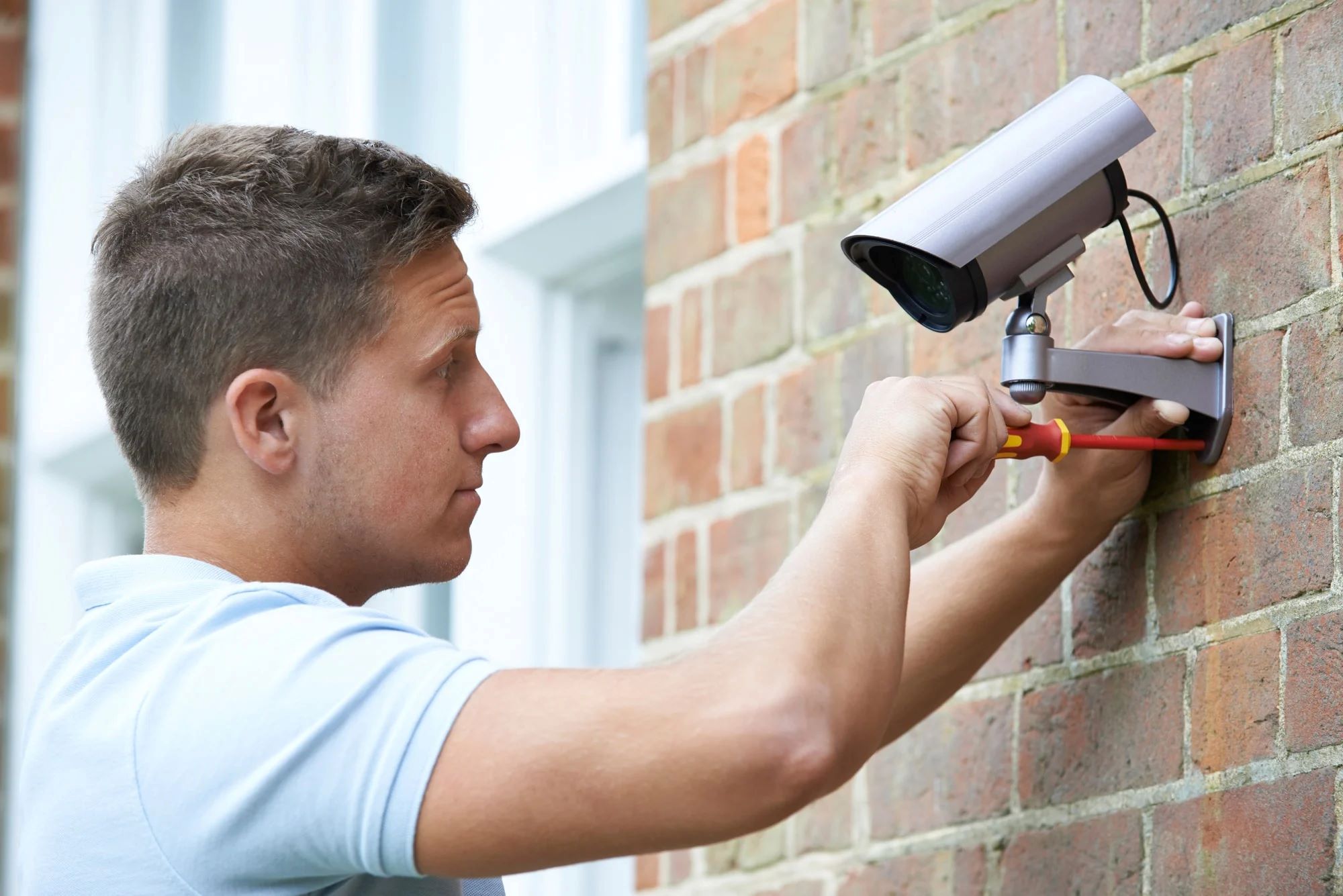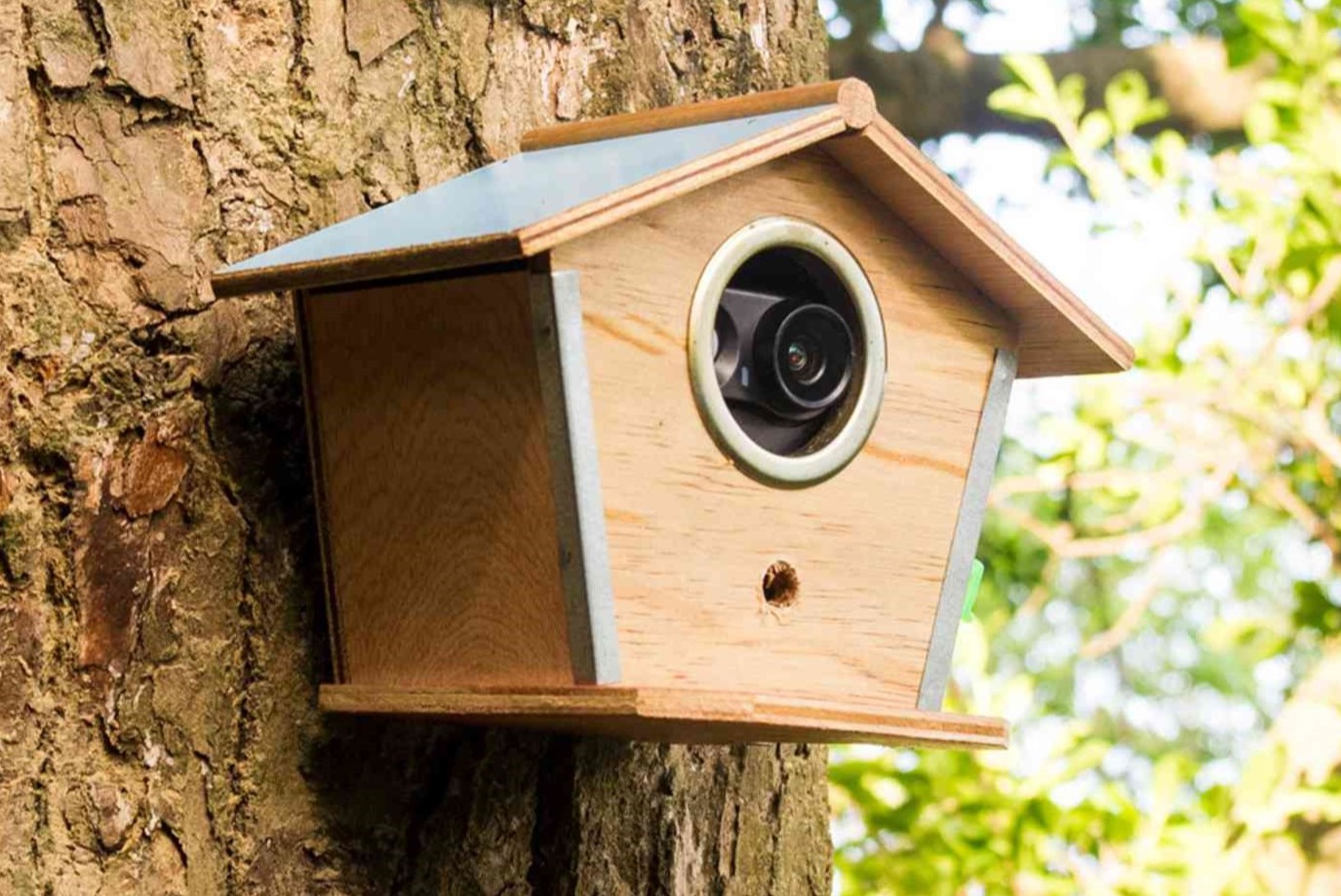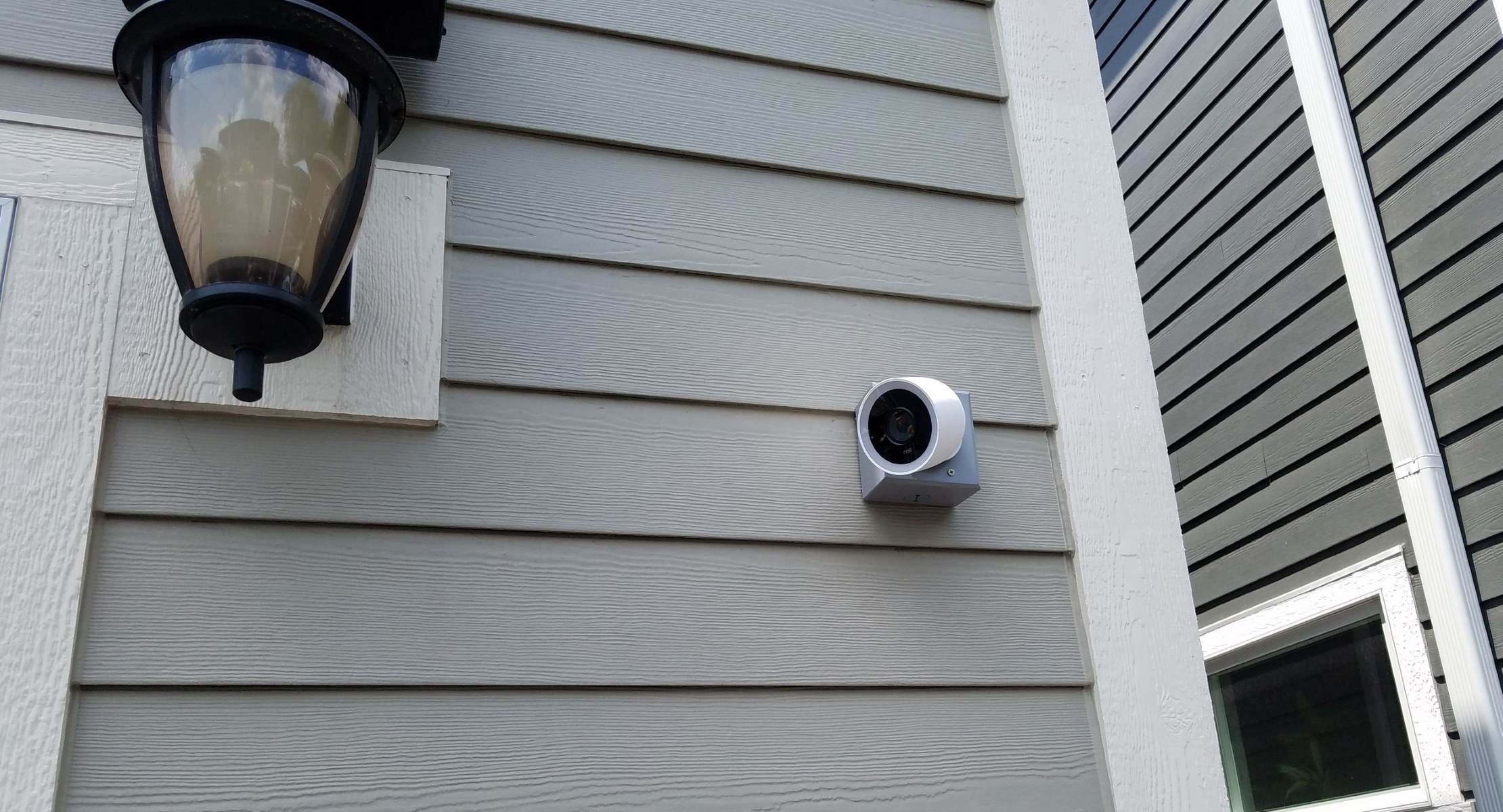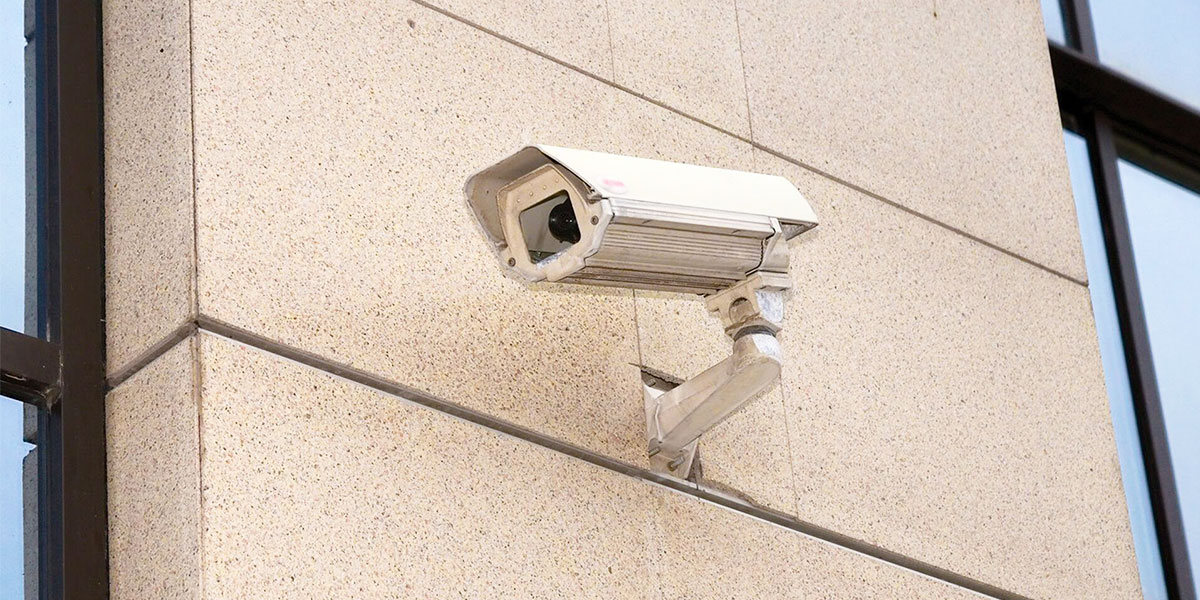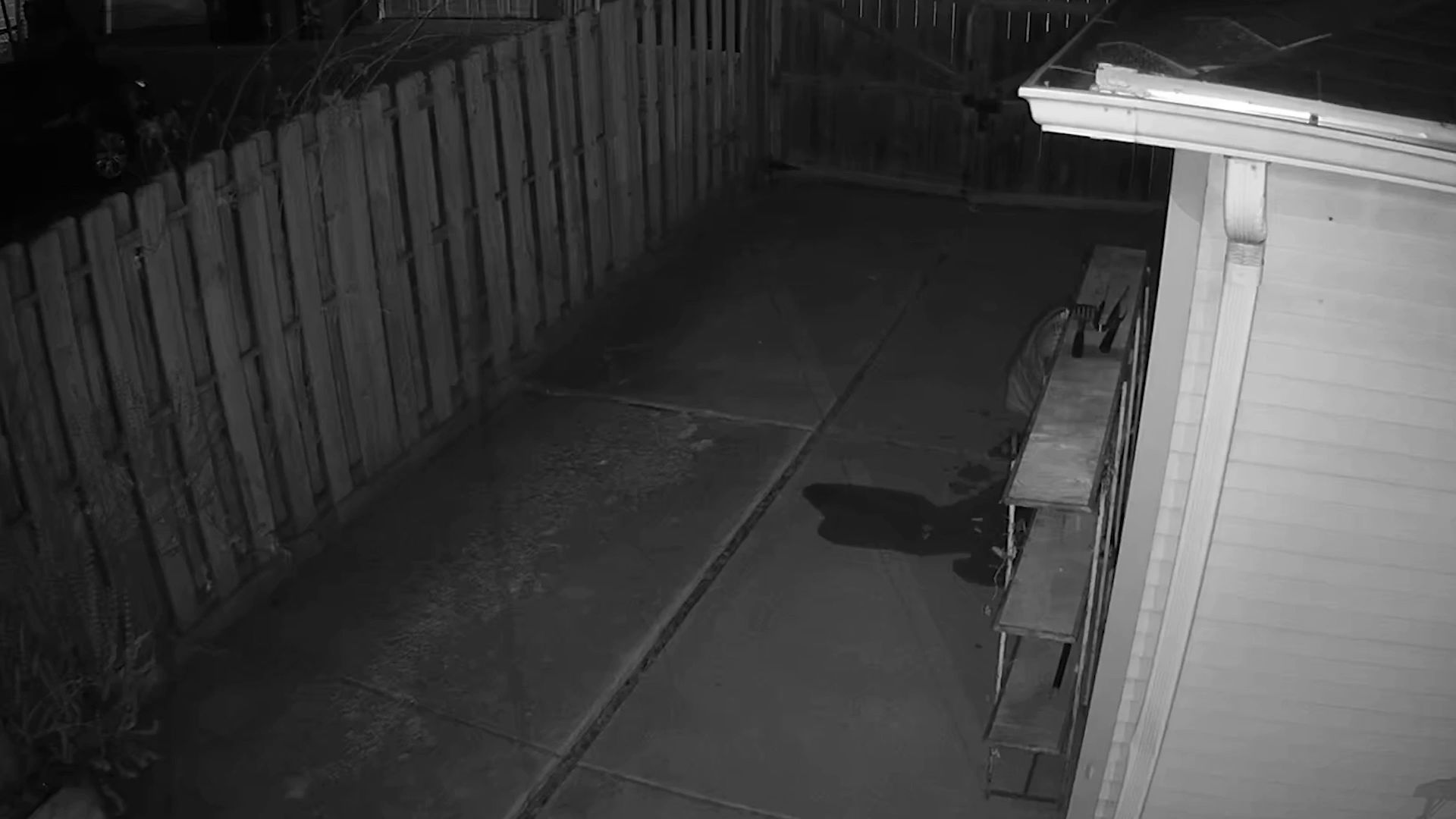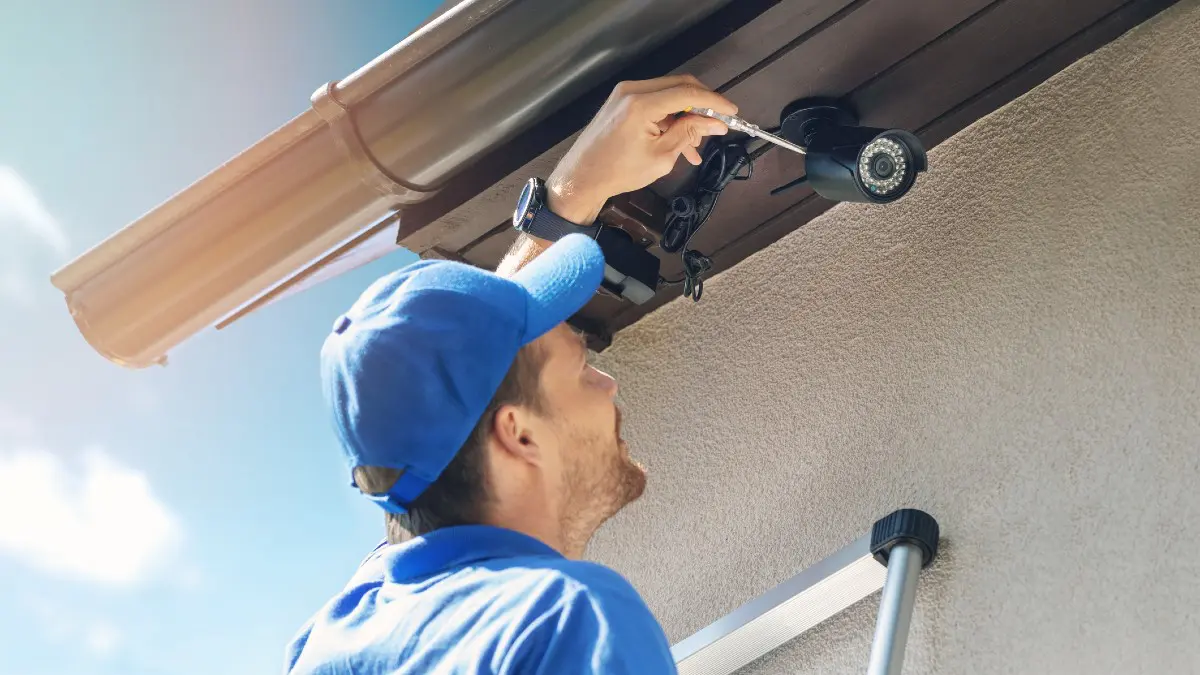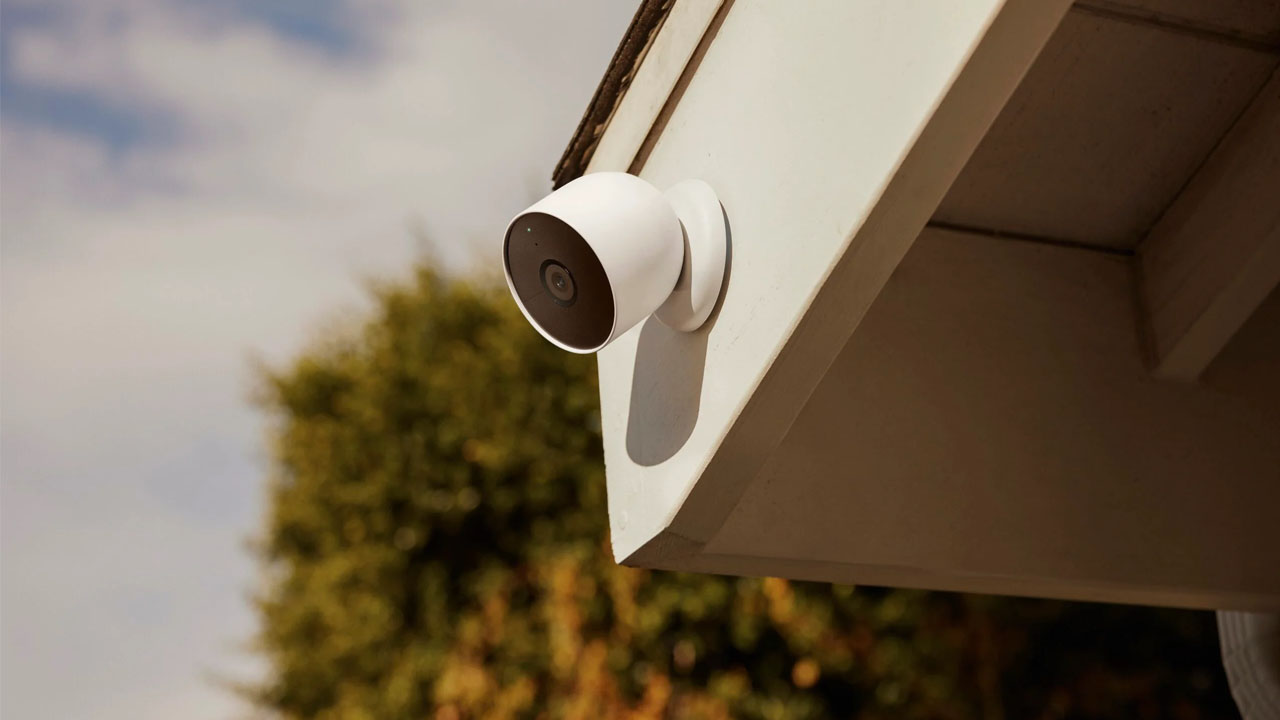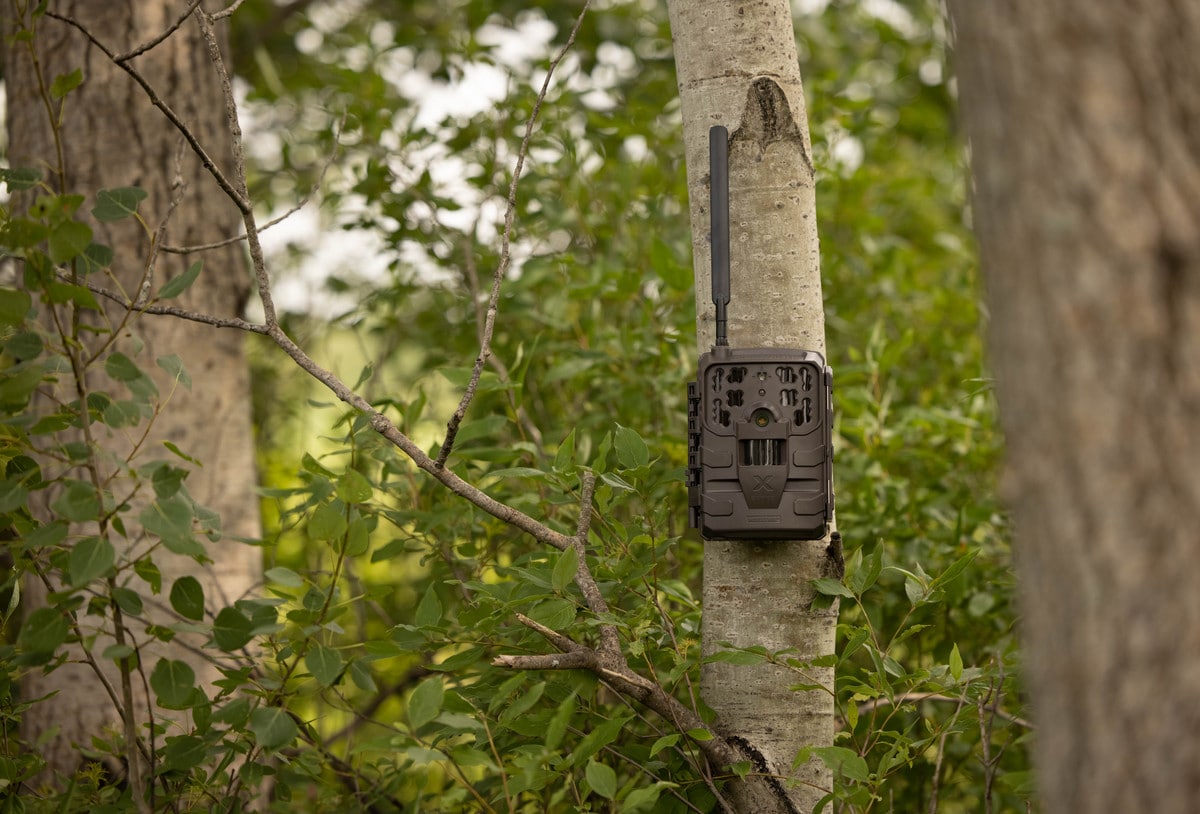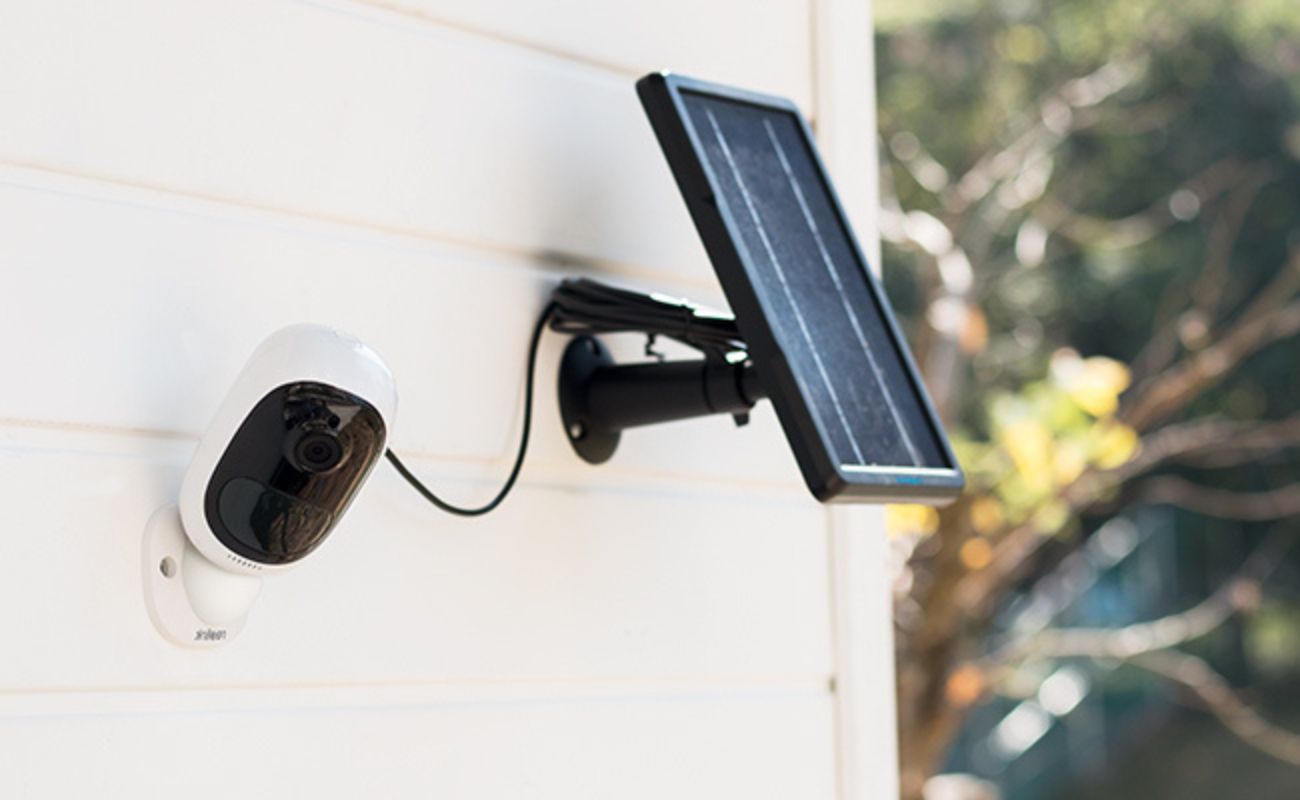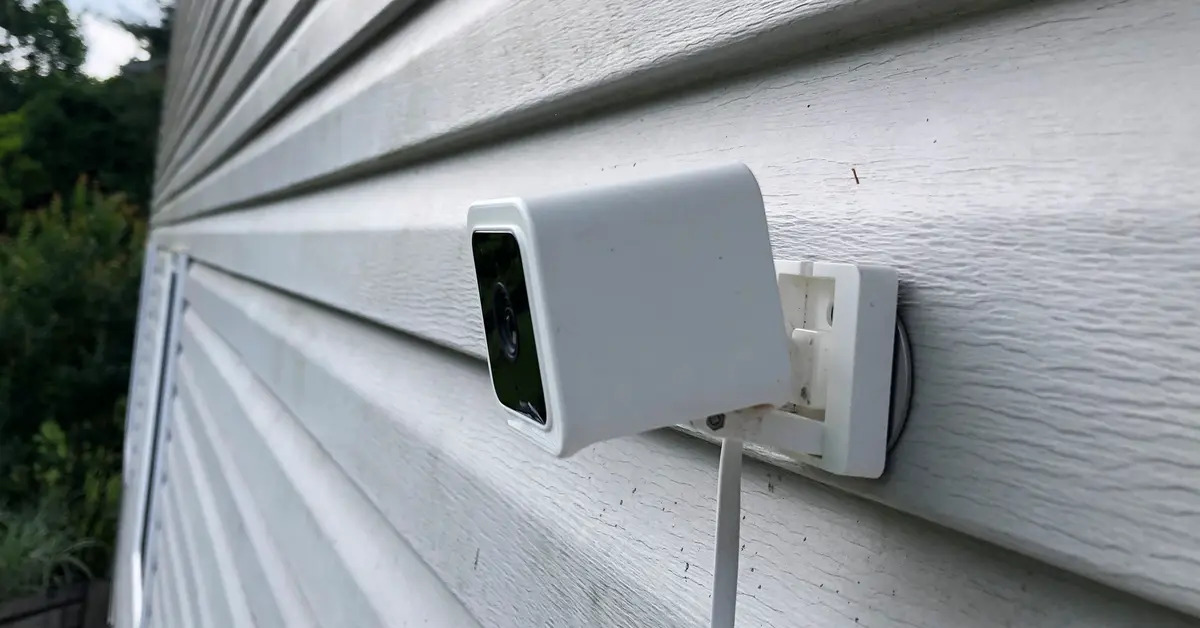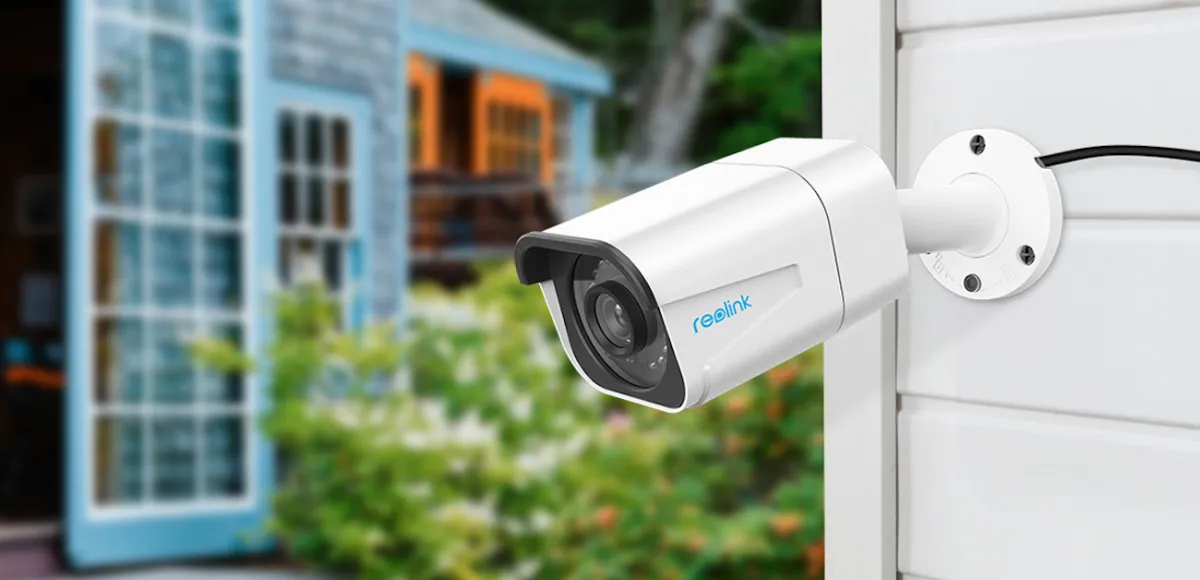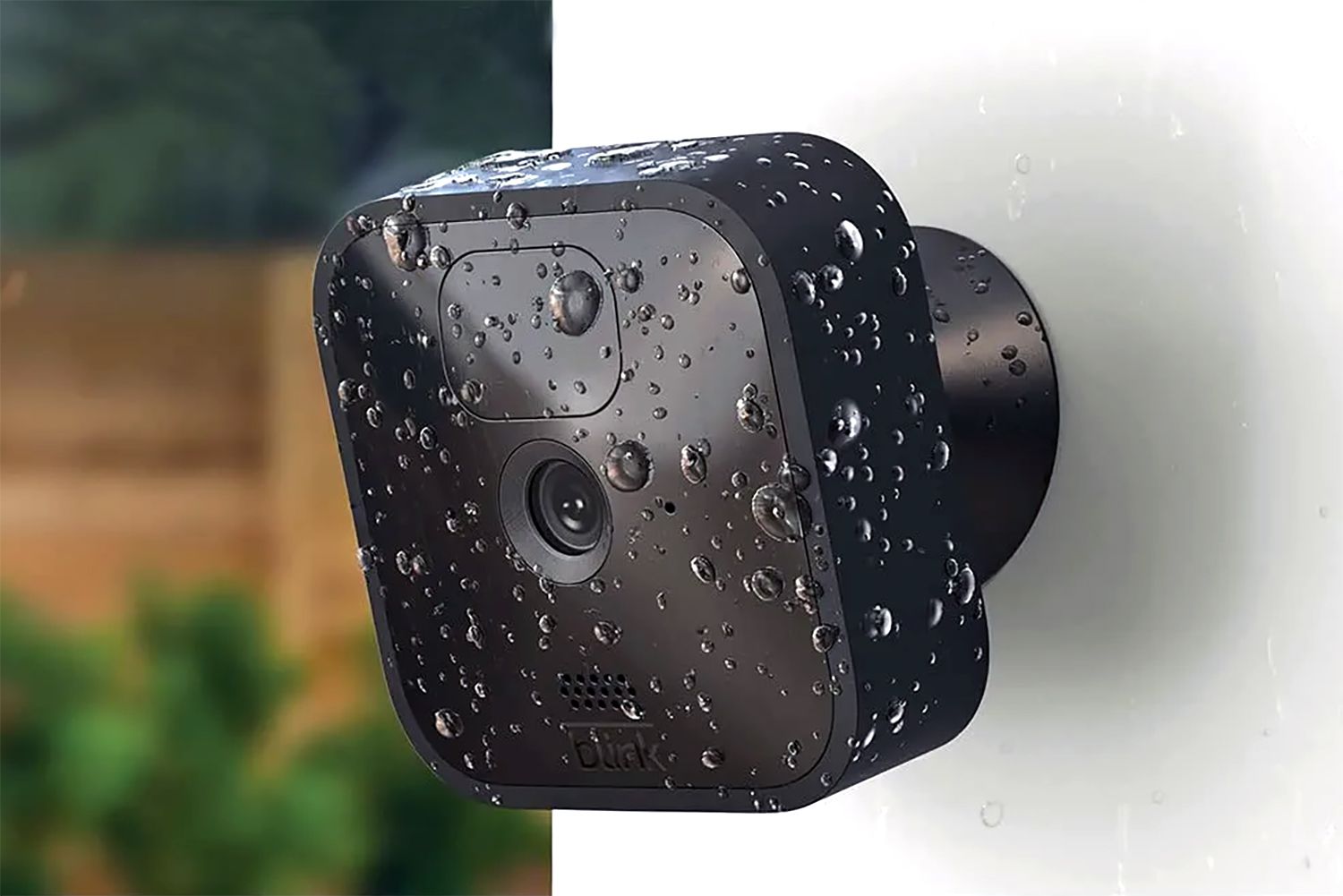Home>Home Security and Surveillance>Where To Hide Home Surveillance Cameras In The House
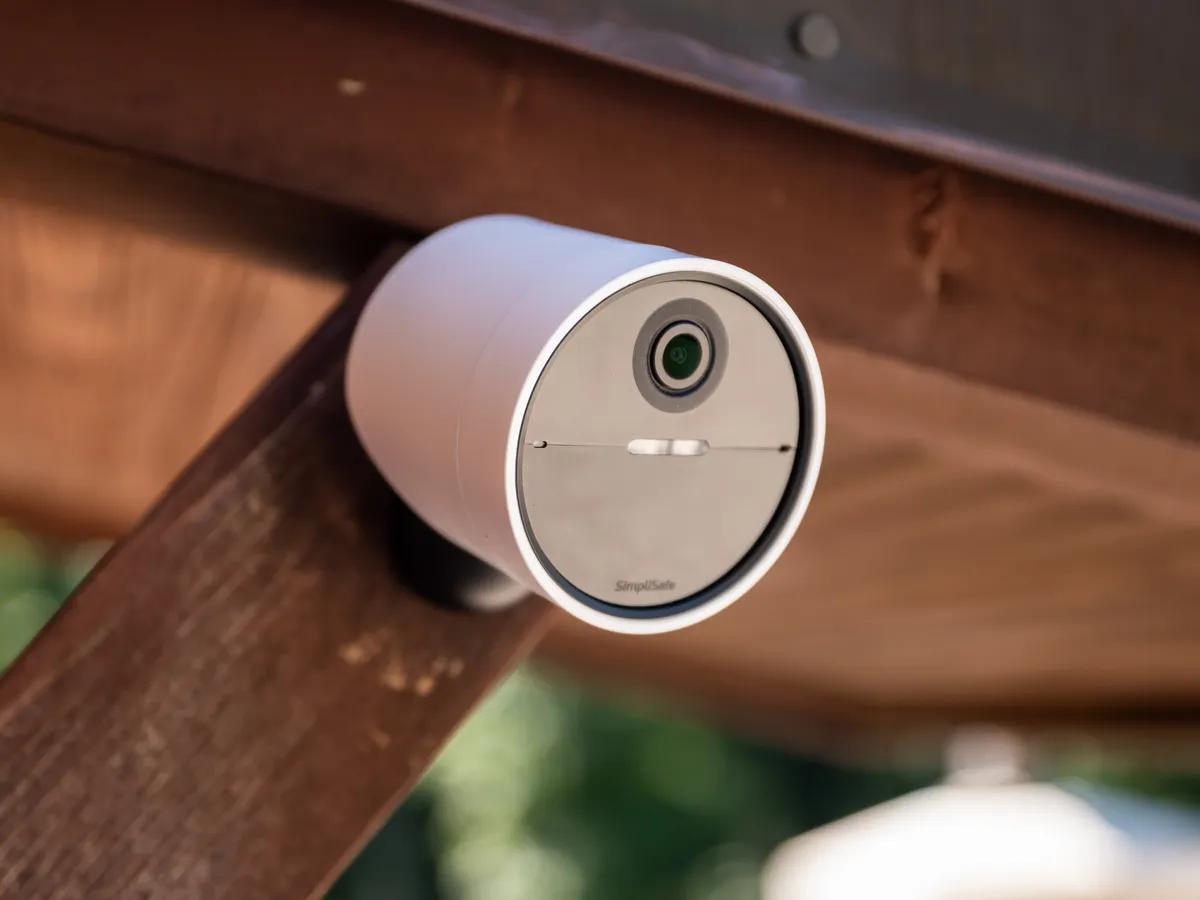

Home Security and Surveillance
Where To Hide Home Surveillance Cameras In The House
Modified: March 6, 2024
Increase your home security with surveillance cameras. Find the best spots to hide home surveillance cameras in your house for maximum protection.
(Many of the links in this article redirect to a specific reviewed product. Your purchase of these products through affiliate links helps to generate commission for Storables.com, at no extra cost. Learn more)
Introduction
Keeping your home and loved ones safe is a top priority, and one essential component of a comprehensive home security system is surveillance cameras. Home surveillance cameras act as a watchful eye, providing you with peace of mind and a sense of security. Whether you are concerned about burglaries, break-ins, or simply want to monitor your property, strategically placing surveillance cameras throughout your home can help deter potential intruders and provide valuable evidence in case of any incidents. However, to maximize their efficacy, it is crucial to know where to hide these cameras in your house.
In this article, we will explore the best locations for hiding home surveillance cameras, focusing on various areas both inside and outside your home. By following these recommendations, you can ensure optimal coverage and minimize the chances of perpetrators spotting and disabling your security system.
Before we delve into the specifics of camera placement, it is important to consider a few general guidelines. Firstly, aim to hide your cameras in inconspicuous locations that blend seamlessly with the environment. This will prevent potential intruders from identifying and tampering with them. Secondly, ensure that the cameras have a clear view of the intended area, avoiding obstructions such as plants, furniture, or other objects that may obstruct the camera’s line of sight.
Now, let’s explore the various hiding spots for home surveillance cameras to help you create an effective surveillance system that safeguards your property and loved ones.
Key Takeaways:
- Strategically placing surveillance cameras in inconspicuous spots throughout your home, from the front door to the backyard, enhances security and deters potential intruders.
- Connecting surveillance cameras to monitoring systems or smartphone apps allows remote access, providing peace of mind and safeguarding loved ones and belongings.
Read more: How To Hide A Security Camera
Front Door
The front door is often the primary point of entry for burglars and intruders. It is crucial to have a surveillance camera monitoring this area to capture any suspicious activity or potential break-ins. There are several discreet locations where you can hide a camera to keep a watchful eye on your front door.
One effective option is to install a peephole camera directly into your front door. These cameras have a small lens that replaces the standard peephole, allowing you to see who is at the door without them realizing they are being watched. This is an ideal solution for homes or apartments with limited space or if you prefer a more covert camera placement.
Alternatively, you can conceal a small camera within an inconspicuous object near the front door, such as a plant pot, birdhouse, or even a fake rock. Make sure to choose an object that won’t draw attention and blends seamlessly with the surroundings. This way, the camera can capture any suspicious activity while remaining undetectable.
Another option is to mount a camera above the front door, preferably in a discreet area such as under the eaves or within a small enclosure. This placement provides a broader view of the front porch or entryway, allowing you to monitor any movements or interactions at the front door.
When mounting a camera at the front door, ensure that it is positioned at the appropriate height to capture clear facial features of anyone approaching or ringing the doorbell. Adjust the angle to minimize glare from sunlight or other light sources, which could affect image quality.
Remember to connect your front door camera to a monitoring system or a smartphone app, which will allow you to access the live feed or review footage remotely. This way, you can always keep an eye on your front door, no matter where you are.
By strategically placing a surveillance camera at your front door, you create a strong deterrent for potential intruders and ensure that you capture any suspicious activity that may occur.
Backyard
The backyard is another crucial area to monitor with surveillance cameras, as it is often a target for burglars and unauthorized individuals seeking access to your property. By strategically placing cameras in your backyard, you can protect your home and belongings effectively.
An effective hiding spot for a backyard surveillance camera is within a birdhouse or a small decorative object such as a garden gnome. These objects can blend seamlessly into the outdoor environment while providing a hidden vantage point to monitor any suspicious activity. Ensure that the camera lens is not obstructed by any surrounding foliage or objects.
If you have a covered patio or deck, consider mounting a camera on the underside of the roof or the eaves. This placement offers a clear view of the backyard while protecting the camera from the elements. Opt for a camera with weatherproof capabilities to ensure its longevity and functionality in various weather conditions.
Another option is to install a camera on a high point such as the exterior wall of your home or a tree branch overlooking the backyard. This placement provides a wider perspective and broader coverage of the entire backyard area. Make sure to position the camera at an angle that minimizes blind spots and captures key areas like entry points, sheds, or valuable items.
In addition to monitoring potential intruders, a backyard camera can also help you keep an eye on children or pets playing outside. It can provide reassurance and ensure their safety even when you are not directly supervising them.
When setting up a backyard surveillance camera, consider connecting it to a motion sensor or a floodlight. This way, the camera will be triggered to start recording whenever it detects movement in the designated area, ensuring that you capture any potential threats or suspicious activity in real-time.
By strategically placing a surveillance camera in your backyard, you can deter intruders, provide a sense of security, and monitor any activity that may occur in this vulnerable area of your property.
Driveway
The driveway is a crucial area to monitor, as it provides access to your home and is often used by intruders as a point of entry. By placing surveillance cameras in strategic locations, you can keep a close watch on any activity in and around your driveway.
One effective option is to install a camera on a nearby lamppost or utility pole. This elevated position provides a wide view of the entire driveway, capturing any vehicles or individuals approaching the property. Ensure that the camera is securely mounted and angled correctly to minimize blind spots.
If you have a gated driveway, consider installing a camera within the gate itself. This hidden placement provides a discreet and inconspicuous surveillance option, allowing you to monitor anyone attempting to enter or exit the property. Ensure that the camera is well integrated into the gate structure and does not compromise its functionality.
Another option is to mount a camera on the exterior wall of your home or garage, overlooking the driveway area. This placement offers a clear view of vehicles and individuals approaching the property and can act as a strong deterrent for potential intruders. Position the camera at a height that captures clear facial features and license plate numbers.
If you have a long driveway, you may consider installing multiple cameras strategically placed at intervals to ensure comprehensive coverage. This way, you can capture any activity along the entire length of the driveway, minimizing blind spots and potential escape routes for intruders.
It is important to connect your driveway surveillance cameras to motion sensors or programmable recording systems. This ensures that the camera is triggered to start recording whenever it detects movement, allowing you to capture any potential threats or suspicious activities in real-time.
Remember to regularly maintain and clean the camera lens to ensure optimal image quality. Additionally, check the camera’s connectivity and storage capacity to ensure that you have access to recorded footage when needed.
By strategically placing surveillance cameras in and around your driveway, you can enhance the security of your home and deter potential intruders from targeting your property.
Garage
The garage is an area often targeted by intruders, as it can provide them with access to your home or valuable belongings. By strategically placing surveillance cameras in and around your garage, you can enhance the security of this vulnerable area.
An effective hiding spot for a garage surveillance camera is near the ceiling, positioned in a discreet corner. This placement allows for a wide-angle view of the entire garage, capturing any suspicious activity or unauthorized access. Mount the camera securely and adjust the angle to minimize blind spots.
If you have windows in your garage, you can mount a camera near the window frame or hide it behind a curtain or blind. This placement provides a clear view of both the interior and exterior of the garage, offering comprehensive surveillance coverage.
Consider connecting your garage surveillance cameras to motion sensors or programmable recording systems. This ensures that the camera starts recording whenever it detects movement, allowing you to capture any potential threats or suspicious activities in real-time. Additionally, linking the cameras to your home security system or smartphone app enables remote access to the live feed or recorded footage.
Another option is to install a camera outside the garage, near the entrance or driveway. This provides a clear view of any vehicles or individuals approaching or departing from the garage area. Make sure to position the camera at a height that captures clear facial features and license plate numbers.
Consider installing additional security measures in your garage, such as motion-activated lights or an alarm system. These can work in conjunction with your surveillance cameras to provide a comprehensive and robust security solution.
Regularly check and maintain your garage surveillance cameras to ensure they are functioning properly. Keep the camera lenses clean and ensure that they are protected from dust, debris, and adverse weather conditions. Test the connectivity and storage capacity to ensure you have access to recorded footage when needed.
By strategically placing surveillance cameras in and around your garage, you can effectively deter potential intruders and protect your valuable belongings and vehicles.
Read more: How To Hide An Outdoor Camera
Living Room
The living room is often the heart of the home, and it is essential to ensure its security and surveillance. By strategically placing surveillance cameras in the living room, you can monitor any activity within this central area of your home.
An ideal location for a living room surveillance camera is on a high shelf or mantelpiece. This placement offers a wide view of the entire room while keeping the camera discreet and blending into the decor. Ensure that the camera is positioned in a way that captures the majority of the space, including entrances and windows.
If you have a television or entertainment system in the living room, consider installing a hidden camera within the device or its stand. This placement can provide an inconspicuous surveillance option, allowing the camera to monitor the room without drawing attention.
An alternative option is to mount a camera on the wall, preferably in a corner or near a piece of wall art. This placement offers a broader perspective and minimizes the chances of the camera being accidentally knocked or tampered with. Adjust the angle to capture the key areas of the living room, such as seating areas, entrances, and valuable items.
Connect your living room surveillance camera to a monitoring system or a smartphone app, which will enable you to access the live feed or review the recorded footage remotely. This way, you can keep an eye on your living room even when you are away from home.
It is important to respect the privacy of individuals in your household and guests. Inform them about the presence of surveillance cameras in the living room and ensure that they are comfortable with being recorded. Consider placing a notice or a sticker near the camera to notify everyone in the area.
Regularly check the camera’s functionality, including its connectivity and storage capacity, to ensure that you have access to the recorded footage when needed. Additionally, adjust the camera settings to optimize image quality and adjust for lighting conditions in the living room.
By strategically placing surveillance cameras in your living room, you can monitor any activity, deter potential intruders, and ensure the safety and security of your home and loved ones.
Kitchen
The kitchen is not only the heart of many homes but also a place where valuable items and appliances are often stored. By strategically placing surveillance cameras in the kitchen, you can enhance the security of this important area and monitor any activity that takes place within it.
An effective hiding spot for a kitchen surveillance camera is on top of a high cabinet or shelf, positioned in a corner. This placement offers a wide view of the entire kitchen while keeping the camera discreet and inconspicuous. Ensure that the camera is securely mounted and angled correctly to capture the key areas of the kitchen, such as entrances, countertops, and valuable appliances.
If your kitchen has a pantry or a closet, consider installing a camera within the pantry door or on the inside of the closet. This hidden placement can provide comprehensive surveillance coverage of the kitchen area while remaining discreet and blending in with the surroundings.
Another option is to mount a camera on the wall or ceiling, overlooking the kitchen. This placement offers a broader perspective and ensures the camera’s stability. Adjust the angle to minimize blind spots and capture the key areas of the kitchen, including the stove, sink, and refrigerator.
Connect your kitchen surveillance camera to a monitoring system or a smartphone app, allowing you to access the live feed or review the recorded footage remotely. This way, you can keep an eye on your kitchen activities, even when you are not in the immediate vicinity.
It is important to remember that the kitchen is a private area where cooking and meal preparation take place. To respect the privacy of individuals in your household or guests, inform them about the presence of surveillance cameras in the kitchen and ensure their consent to be recorded. Consider placing a notice or a sticker near the camera to notify everyone in the area.
Regularly check the functionality of the camera, including its connectivity and storage capacity, to ensure that you have access to the recorded footage when needed. Additionally, adjust the camera settings to optimize image quality and adjust for lighting conditions in the kitchen.
By strategically placing surveillance cameras in your kitchen, you can monitor any activity, deter potential intruders, and ensure the safety and security of your home and valuable belongings.
Bedroom
The bedroom is a private sanctuary where you should feel safe and secure. However, it is still important to consider surveillance options to protect your personal belongings and ensure your peace of mind. By strategically placing surveillance cameras in the bedroom, you can monitor any activity and enhance the security of this intimate space.
An ideal location for a bedroom surveillance camera is on a high shelf or mounted on the wall, positioned to capture a wide-angle view of the room. This placement ensures comprehensive coverage while keeping the camera discreet and inconspicuous. Make sure to adjust the angle to capture any entry points or valuable items within the bedroom.
If you have a freestanding mirror or a piece of furniture in your bedroom, consider installing a hidden camera within or behind it. This placement provides an inconspicuous surveillance option, allowing the camera to blend seamlessly into the room’s decor while keeping a watchful eye on the surroundings.
Another option is to mount a camera on the ceiling, near the center of the room. This placement offers a high vantage point and provides a clear view of the entire bedroom. Adjust the camera’s lens to capture key areas such as the bed, doors, and windows.
Connect your bedroom surveillance camera to a monitoring system or a smartphone app, allowing you to access the live feed or review the recorded footage remotely. This way, you can keep an eye on your bedroom’s activities even when you are not present.
When installing a surveillance camera in the bedroom, it is crucial to respect the privacy of individuals in your household or guests. Inform them about the presence of the camera and ensure their consent to be recorded. Consider placing a notice or a sticker near the camera as a reminder and toappreciate transparency.
Regularly check the functionality of the camera, including its connectivity and storage capacity, to ensure that you have access to recorded footage when needed. Additionally, adjust the camera settings to optimize image quality and adjust for lighting conditions in the bedroom.
By strategically placing surveillance cameras in your bedroom, you can monitor any activity, enhance security, and have peace of mind knowing that your personal space is protected.
Consider placing home surveillance cameras in inconspicuous locations such as behind decorative items, inside houseplants, or within wall-mounted fixtures to discreetly monitor your home.
Home Office
Your home office is where you likely store valuable equipment, sensitive documents, and spend a significant amount of time. Securing this space with surveillance cameras is essential to protect your assets and maintain a secure working environment. By strategically placing surveillance cameras in your home office, you can enhance security and monitor any activity within this important area.
An optimal location for a home office surveillance camera is on a high shelf or mounted on the wall, positioned to cover the entire room. This placement provides a wide-angle view while keeping the camera discreet and inconspicuous. Ensure that the camera is adjusted to capture key areas such as the desk, entrance, and any valuable equipment or storage cabinets.
If you have a bookshelf or filing cabinet in your home office, consider installing a hidden camera within or behind it. This covert placement allows the camera to blend seamlessly into the office space while efficiently monitoring the area.
Another option is to mount a camera on the ceiling, near the center of the room, providing a top-down view of the entire office. This placement offers a comprehensive perspective and minimizes blind spots. Adjust the camera’s lens to ensure clear visibility of important areas and objects within the office.
Connect your home office surveillance camera to a monitoring system or a smartphone app, allowing you to access the live feed or review the recorded footage remotely. This way, you can keep an eye on your office activities and ensure the security of your workspace, even when you are not in the immediate vicinity.
Before installing surveillance cameras in your home office, it is important to consider the privacy implications for both yourself and others who may use the space. Inform individuals in your household or any visitors about the presence of the camera and respect their consent to be recorded. Consider placing a notice or a sticker near the camera to communicate its presence.
Regularly check the functionality of the camera, including its connectivity and storage capacity, to ensure that you have access to recorded footage when needed. Additionally, adjust the camera settings to optimize image quality and adjust for lighting conditions within the office.
By strategically placing surveillance cameras in your home office, you can monitor any activity, deter potential security breaches, and ensure the protection of your valuable assets and sensitive information.
Read more: How To Hide From Security Cameras
Nursery or Children’s Rooms
Ensuring the safety and security of your children is of utmost importance, especially within their own nursery or bedrooms. By strategically placing surveillance cameras in these areas, you can have peace of mind knowing that you can monitor their well-being and keep them safe.
An ideal location for a nursery or children’s room surveillance camera is mounted on the wall, positioned to capture a wide-angle view of the entire room. This placement allows you to monitor your child’s activities and ensure their safety. Be sure to adjust the camera’s angle to include the crib, play area, and entrance to the room.
If you have a bookshelf or a piece of furniture in the nursery or children’s room, you can consider hiding a camera within or behind it. This discreet placement helps the camera blend in with the room’s decor while capturing any activity without drawing attention.
Another option is to mount a camera on the ceiling, near the center of the room. This placement offers a top-down perspective and provides a clear view of the entire area. Adjust the camera’s angle appropriately to capture the most important areas, such as the crib and play area.
Connect the nursery or children’s room surveillance camera to a monitoring system or a smartphone app, allowing you to access the live feed or review the recorded footage remotely. This way, you can keep an eye on your child’s activities and ensure their safety, even when you are elsewhere in the house.
When installing surveillance cameras in the nursery or children’s rooms, it is essential to respect the privacy of your children. Taking their age and level of understanding into consideration, communicate with them about the purpose of the camera and explain how it helps keep them safe. Ensure their consent and make any necessary adjustments to protect their privacy.
Regularly check the functionality of the camera, including its connectivity and storage capacity, to ensure that you have access to recorded footage when needed. Additionally, adjust the camera settings to optimize image quality, adjust for lighting conditions, and ensure the camera does not disturb your child’s sleep.
By strategically placing surveillance cameras in the nursery or children’s rooms, you can monitor their activities, ensure their safety, and have peace of mind knowing that you can keep a watchful eye on them at all times.
Basement
The basement is often an overlooked area when it comes to home security, but it is crucial to ensure its surveillance for various reasons, including preventing break-ins or monitoring potential risks such as flooding or fire. By strategically placing surveillance cameras in the basement, you can enhance the security of this vulnerable area in your home.
An effective location for a basement surveillance camera is mounted on the ceiling, positioned to provide a wide-angle view of the entire space. This placement ensures comprehensive coverage while keeping the camera discreet and inconspicuous. Adjust the camera’s angle to capture key areas such as entry points, storage areas, and utility systems.
If you have shelving units or other furniture in the basement, consider installing a hidden camera within or behind them. This placement can help the camera blend seamlessly into the surroundings while allowing you to monitor the area without drawing attention.
Another option is to mount a camera on a wall near the entrance or in a corner, providing a clear view of the basement and its surroundings. This placement helps capture any activity taking place near the entrance and gives an overview of the entire space. Adjust the camera’s angle to minimize blind spots.
Connect your basement surveillance camera to a monitoring system or a smartphone app, which will allow you to access the live feed or review the recorded footage remotely. This way, you can keep an eye on your basement regardless of your location, ensuring the security and safety of your home.
It is essential to regularly check the functionality of the camera, including its connectivity and storage capacity, to ensure that you have access to recorded footage when needed. Additionally, adjust the camera settings to optimize image quality and adjust for the ambient lighting conditions in the basement.
Remember to take adequate measures to protect your basement against potential risks such as flooding or fire. Incorporate additional security features like motion sensors, smoke alarms, or water leak detectors to complement your surveillance cameras and ensure comprehensive protection.
By strategically placing surveillance cameras in your basement, you can monitor any activity, deter potential intruders, and mitigate risks to maintain the security and safety of your home.
Attic
The attic is often an overlooked area when it comes to home security, but it is important to ensure its surveillance for various reasons. By strategically placing surveillance cameras in the attic, you can enhance the security of this often unattended and vulnerable space in your home.
An optimal location for an attic surveillance camera is mounted on the ceiling or high on a wall, positioned to provide a wide-angle view of the entire area. This placement ensures comprehensive coverage while keeping the camera discreet and inconspicuous. Adjust the camera’s angle to capture key areas such as the entrance, access points, and valuable items stored in the attic.
If there are structural beams or other objects in the attic, consider installing a hidden camera within or behind these objects. This covert placement allows the camera to blend seamlessly into the attic’s environment, ensuring effective surveillance without being easily detectable.
Another option is to mount a camera near the attic access hatch or door, providing a clear view of anyone entering or exiting the space. This placement allows you to monitor the attic’s entrance and ensures that you are aware of any unauthorized access.
Connect your attic surveillance camera to a monitoring system or a smartphone app, enabling you to access the live feed or review the recorded footage remotely. This way, you can keep an eye on your attic’s activities from anywhere, ensuring the security of your home and belongings.
Regularly check the functionality of the camera, including its connectivity and storage capacity, to ensure that you have access to recorded footage when needed. Additionally, adjust the camera settings to optimize image quality and adjust for the ambient lighting conditions in the attic.
Remember to take essential safety measures when accessing the attic, such as using proper lighting and ladder safety precautions. Ensure you follow all necessary safety protocols and exercise caution when installing or maintaining the surveillance camera.
By strategically placing surveillance cameras in your attic, you can monitor any activity, deter potential intruders, and ensure the security of this often overlooked part of your home.
Staircases and Hallways
Staircases and hallways are high-traffic areas in your home, making them important spaces to monitor for security purposes. By strategically placing surveillance cameras in these areas, you can enhance the overall security of your home and monitor any activity that takes place in these key spaces.
An optimal location for a surveillance camera in staircases and hallways is typically on a wall or ceiling, positioned to provide a clear view of the entire area. This placement ensures comprehensive coverage while keeping the camera discreet and inconspicuous. Adjust the camera’s angle to capture the entire length of the staircase or hallway.
If there are any decorative elements or architectural features, such as columns or niches, consider installing a hidden camera within or behind them. This covert placement allows the camera to blend seamlessly into the environment, ensuring effective surveillance without drawing attention to itself.
Another option is to mount a camera at the corners of staircases or hallways, providing a broad perspective and minimizing any blind spots. This strategic placement offers optimal coverage of these high-traffic areas, ensuring you can monitor all movements and activities.
Connect your surveillance cameras in staircases and hallways to a monitoring system or a smartphone app, giving you the ability to access the live feed or review the recorded footage remotely. This way, you can stay informed about any activity in these areas, even when you are not physically present.
It is crucial to regularly check the functionality of the cameras, including their connectivity and storage capacity, to ensure that you have access to recorded footage when needed. Additionally, adjust the camera settings to optimize image quality and adjust for changes in lighting conditions along the staircases and hallways.
Ensure that you communicate with family members or others in your home about the presence of surveillance cameras in these areas, respecting their privacy and maintaining open lines of communication. Consider placing a notice or a sticker near the cameras to notify everyone of their presence.
By strategically placing surveillance cameras in staircases and hallways, you can effectively monitor these high-traffic areas, deter potential intruders, and ensure the overall security of your home.
Read more: How To Hide An Indoor Security Camera
Outdoor Security Cameras
Outdoor security cameras play a crucial role in protecting your home and deterring potential intruders. By strategically placing surveillance cameras around the exterior of your property, you can create a robust security system that monitors the surroundings and provides a visible deterrent for would-be trespassers.
When it comes to outdoor security cameras, it is important to choose models that are specifically designed for outdoor use. Look for cameras with weatherproof and vandal-resistant features to withstand the elements and potential tampering.
One of the most effective placements for outdoor security cameras is near the entrances of your property, such as the front door, back door, and patio doors. These entry points are often targeted by intruders, and having cameras in these locations can help capture any suspicious activity or attempted break-ins.
Consider mounting cameras at an elevated position, such as under the eaves or on the roofline of your home. This placement offers a wider field of view and helps protect the cameras from tampering or vandalism. Adjust the camera angles to capture the desired areas while minimizing blind spots.
Strategic placement of cameras in areas with valuable outdoor items, such as a pool, shed, or garage, can help monitor and protect these assets. Position the cameras to cover these spaces, ensuring you have a clear view of any movement or unauthorized access.
Lighting plays a crucial role in outdoor security. Consider integrating your outdoor security cameras with motion sensor lights. This combination not only provides additional visibility but also serves as an effective deterrent, as it illuminates the area when motion is detected.
Connect your outdoor security cameras to a monitoring system or a smartphone app, allowing you to access the live feed or review recorded footage remotely. This way, you can always keep an eye on your property, even when you are away from home.
Regularly check the functionality of the cameras, including their connectivity and storage capacity, to ensure that you have access to recorded footage whenever needed. Additionally, make sure to clean the camera lenses regularly to maintain clear image quality.
As you place outdoor security cameras, be mindful of privacy considerations. Avoid positioning cameras in areas where they might intrude on your neighbors’ privacy and ensure compliance with any local regulations or guidelines.
By strategically placing outdoor security cameras around your property, you can enhance the security of your home, deter potential intruders, and have peace of mind knowing that you can monitor and protect your property 24/7.
Conclusion
Home security and surveillance are essential aspects of keeping your loved ones and property safe. By strategically placing surveillance cameras throughout your home, you can create a comprehensive security system that deters potential intruders and provides valuable evidence in case of any incidents. From the front door to the backyard, and even in specific rooms like the living room and nursery, each area of your home demands careful consideration when it comes to camera placement.
Strive to find discreet hiding spots that blend seamlessly with the environment, ensuring that the cameras remain undetectable to potential intruders. Consider different options depending on the area, such as mounting cameras on ceilings, walls, or hidden within objects like plants or decorative items. Adhering to privacy guidelines and informing individuals in your household about the presence of cameras can lead to a respectful and secure environment for everyone.
Connect your surveillance cameras to monitoring systems or smartphone apps, empowering you to access live feeds or recorded footage remotely. This technological integration allows you to keep a watchful eye on your property at all times, no matter where you are. Regular maintenance, including checking connectivity, storage, and camera angles, ensures that your surveillance system remains effective and reliable.
Remember, outdoor security cameras are crucial for monitoring entrances, protecting valuable areas, and deterring potential intruders. Positioning them at elevated locations, integrating them with motion sensor lights, and complying with privacy and local regulations are important considerations.
By incorporating strategic camera placement throughout your home, you can create a multi-layered security system that provides peace of mind and safeguards your loved ones and belongings. Investing in home security and surveillance technologies not only enhances your safety but also acts as a deterrent, reducing the likelihood of intrusions and giving you the confidence to live comfortably and securely in your own space.
Frequently Asked Questions about Where To Hide Home Surveillance Cameras In The House
Was this page helpful?
At Storables.com, we guarantee accurate and reliable information. Our content, validated by Expert Board Contributors, is crafted following stringent Editorial Policies. We're committed to providing you with well-researched, expert-backed insights for all your informational needs.
